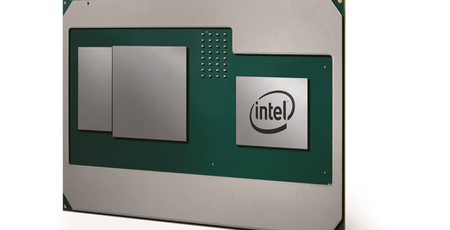
Since Intel's eighth-generation Core series of CPUs were introduced in August with the mobile-centric U-Series chips, we've also had the latest desktop chips arrive. November, however, brought the unexpected news of a collaboration with AMD that would see Intel CPUs paired with AMD Radeon RX Vega M GPUs and High Bandwidth Memory 2 (HBM2). Today, Intel is officially launching these chips, announcing five new SKUs targeting gamers, content creators, and VR users.
Intel's categorisation of the CPUs is likely to lead to some confusion, but as we understand it these are newly designated G-Series chips, distinct from the H-Series, which is still to launch for 8th Gen and will replace the current H-Series that includes the Core i7-7700HQ. G-Series chips all have onboard RX Vega M GPUs, while true H-Series chips will be solely Intel CPUs, leaving manufacturers free to pair them up with any discrete GPU. The new G-Series chips here are embedded parts for use in laptops, two-in-ones, mini-PCs and so on. Partners signed up already include HP and Dell, and Intel is already planning a new high-performance NUC (more details below). Further specifics aren't yet available, but Intel expects systems featuring the new chips to start shipping in Spring 2018.
The five SKUs offer a mix of specifications on both the CPU and GPU front. All are using quad-core Kaby Lake CPUs with eight threads available thanks to Hyper-Threading. The four Core i7 parts get a 3.1GHz base frequency and 8MB of cache, while these drop to 2.8GHz and 6MB on the sole Core i5 SKU. Dual-channel DDR4 memory is supported up to 2,400MHz, and the top-end model, the Core i7-8809G, gets a slightly higher Turbo frequency than the rest and is fully unlocked for overclocking purposes.
The CPU is connected to the Radeon RX Vega M GPU via eight PCIe 3.0 lanes. The GPU comes in two flavours: Radeon RX Vega M GH (Graphics High) and Radeon RX Vega M GL (Graphics Low), which net you 24 and 20 GCN Compute Units for 1,536 and 1,280 stream processors respectively. Clock speeds for both the core and the 4GB HBM2 frame buffer are higher on the GH chip too. The two SKUs using this faster GPU have a 100W TDP while those with the GL implementation drop to 65W. You can see some Intel-produced performance comparisons in the slides below to get an idea of how Intel expects these chips to perform when put up against older and current solutions. At the very top, Intel is positioning its new chip against a Core i7-7700HQ paired with an Nvidia GTX 1060 Max-Q GPU, which covers a fairly broad range of the gaming notebook space but means that GTX 1070 and above will still rule the roost from a pure performance standpoint.
Despite the new on-package GPUs, the CPUs will all still feature onboard Intel HD Graphics 630 as usual, and the processor can switch between the two GPUs as necessary depending on the workload, which is a key feature for power saving. In theory, partners will be able to offer support for up to nine external displays (three from the Intel GPU, six from the AMD one, where FreeSync is also supported).
The new processors are the first consumer offerings from Intel to use its Embedded Multi-die Interconnect Bridge (EMIB), which is a layer in the package that connects the HBM2 to the RX Vega M GPU, much like AMD's own Infinity Fabric. It's this that allows the HBM2 to sit so close to the GPU and which is responsible for a significant reduction in silicon footprint and z-height – clearly very important factors in the embedded and mobile markets.
These are also the first consumer mobile processors to feature HBM2 memory. Intel claims the solution uses up to 80 percent less power than GDDR5 would, and again this is critical for the environments these chips will be used in.
With these processors, Intel is also introducing dynamic power sharing via a new feature called Intel Dynamic Tuning. The previously mentioned TDPs of 65W and 100W are shared across all components (CPU, GPU, HBM2), and Dynamic Tuning allows Intel to monitor the power and thermals of these parts up to 10 times per second and adjust how power is allocated based on the current workload. Intel claims it has achieved up to 18 percent efficiency gains with this method, which will allow its partners to design for thinner platforms or obtain higher performance from existing ones.
In terms of drivers and support, as Intel products everything on this front will come via Intel, though AMD's RTG team will of course be supporting with driver development. As such, the Radeon Software Adrenalin Edition drivers are what you can expect to be using, but the Radeon Settings menu will have an exclusive blue colour scheme to denote that it's an Intel product. The company is also promising considerable levels of day 0 game support but hasn't committed to any specifics beyond that. On the top-end chip, which is unlocked for overclocking, Intel's Extreme Tuning Utility (XTU) and the AMD Radeon WattMan interface can both be used for the CPU and GPU (and HBM2) portions respectively.
While you'll need to wait a little longer to see specific systems featuring the new chips (expect this sooner rather than later given that CES 2018 is now getting underway), Intel has revealed details of a new NUC, the NUC 8 Enthusiast. Featuring the top-spec, unlocked Core i7-8809G with Radeon RX Vega M GH graphics, it will come in a chassis with a volume of just 1.2 litres. Inside will be dual M.2 ports, while connectivity is confirmed as including two Thunderbolt 3 ports, two HDMI ports (front and rear), and two DisplayPort headers. It will be able to drive up to six 60Hz 4K displays at once, will be VR capable, and has dual Gigabit Ethernet ports and seven USB ports. It is due to start shipping in late March, but pricing is still to be confirmed.

MSI MPG Velox 100R Chassis Review
October 14 2021 | 15:04


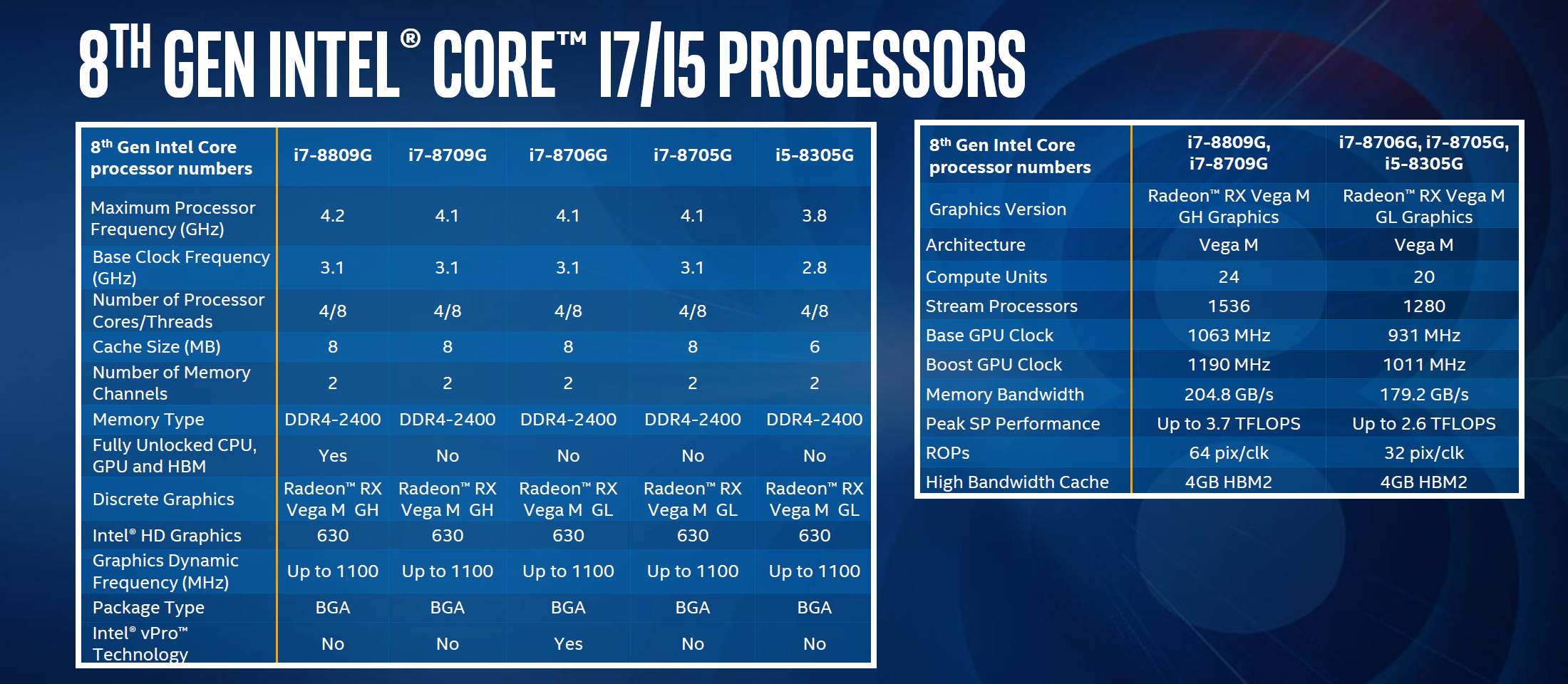
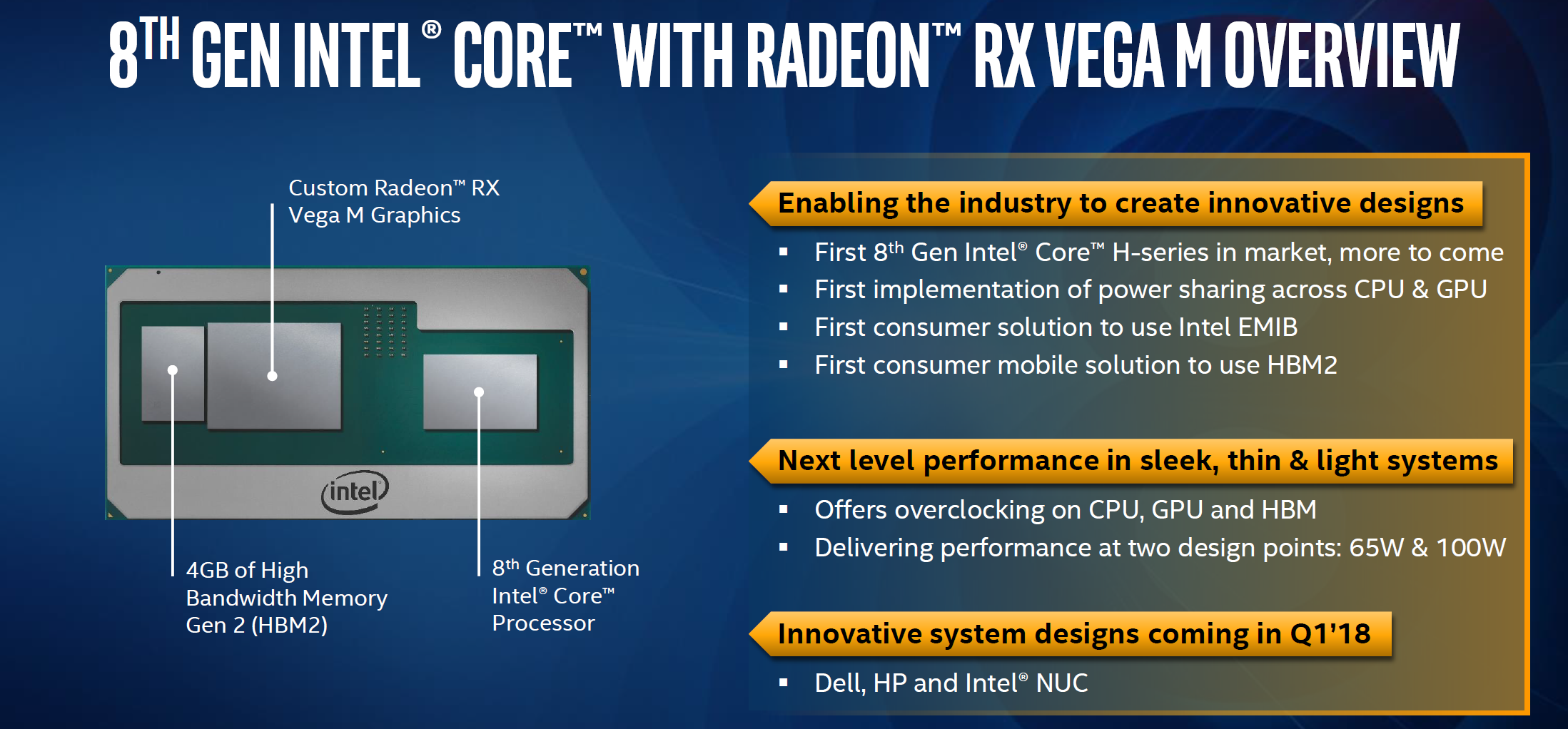


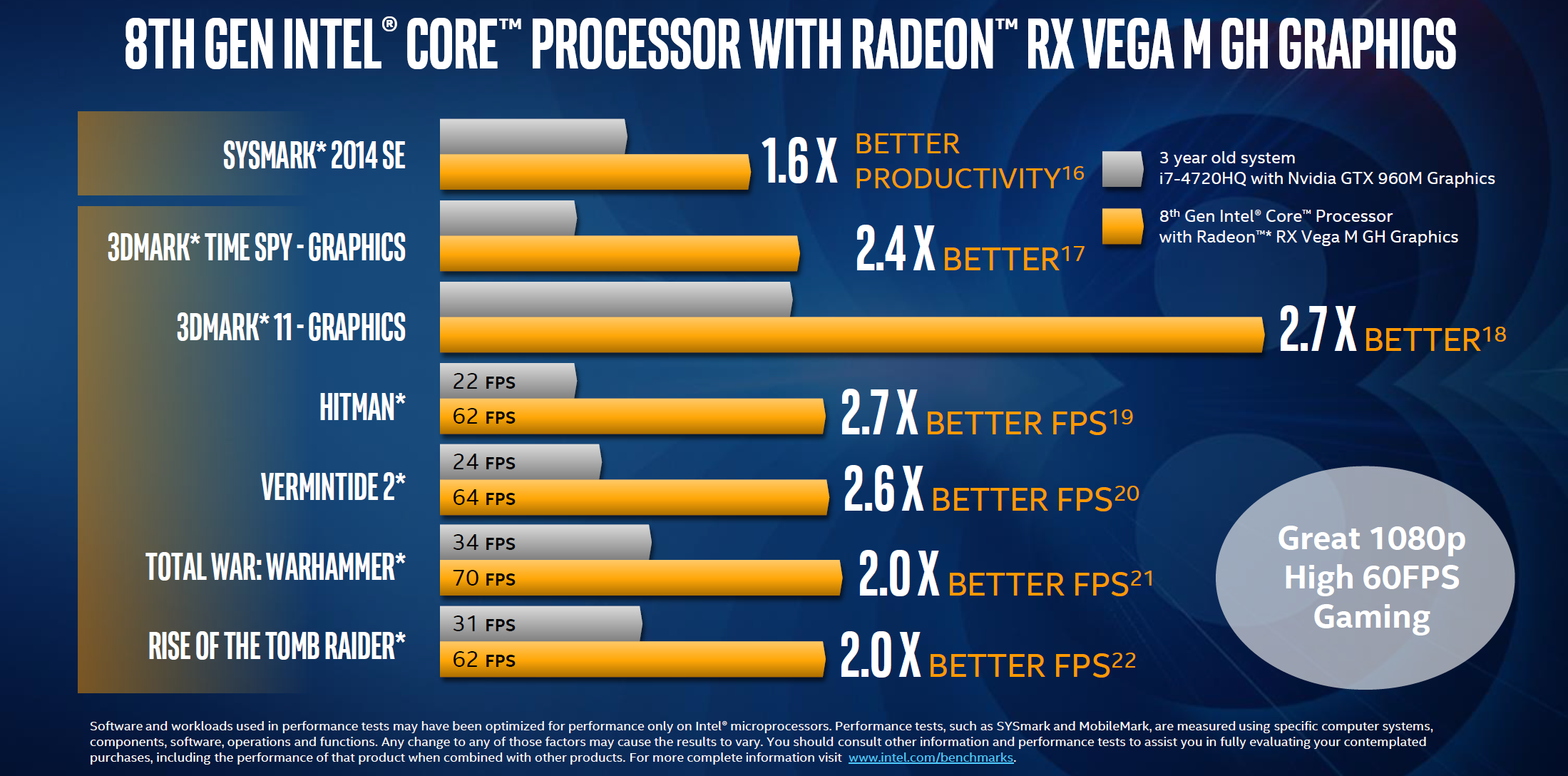

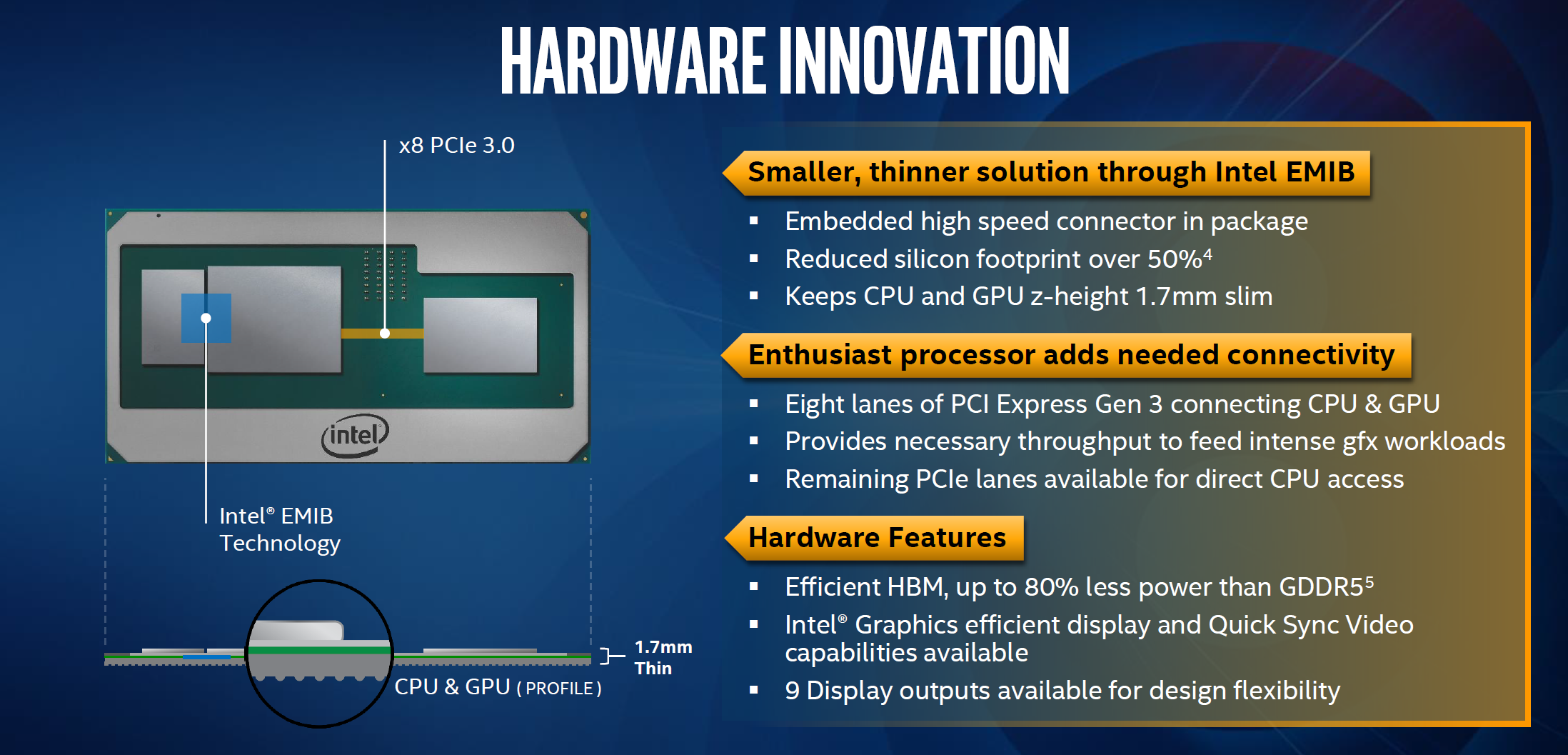
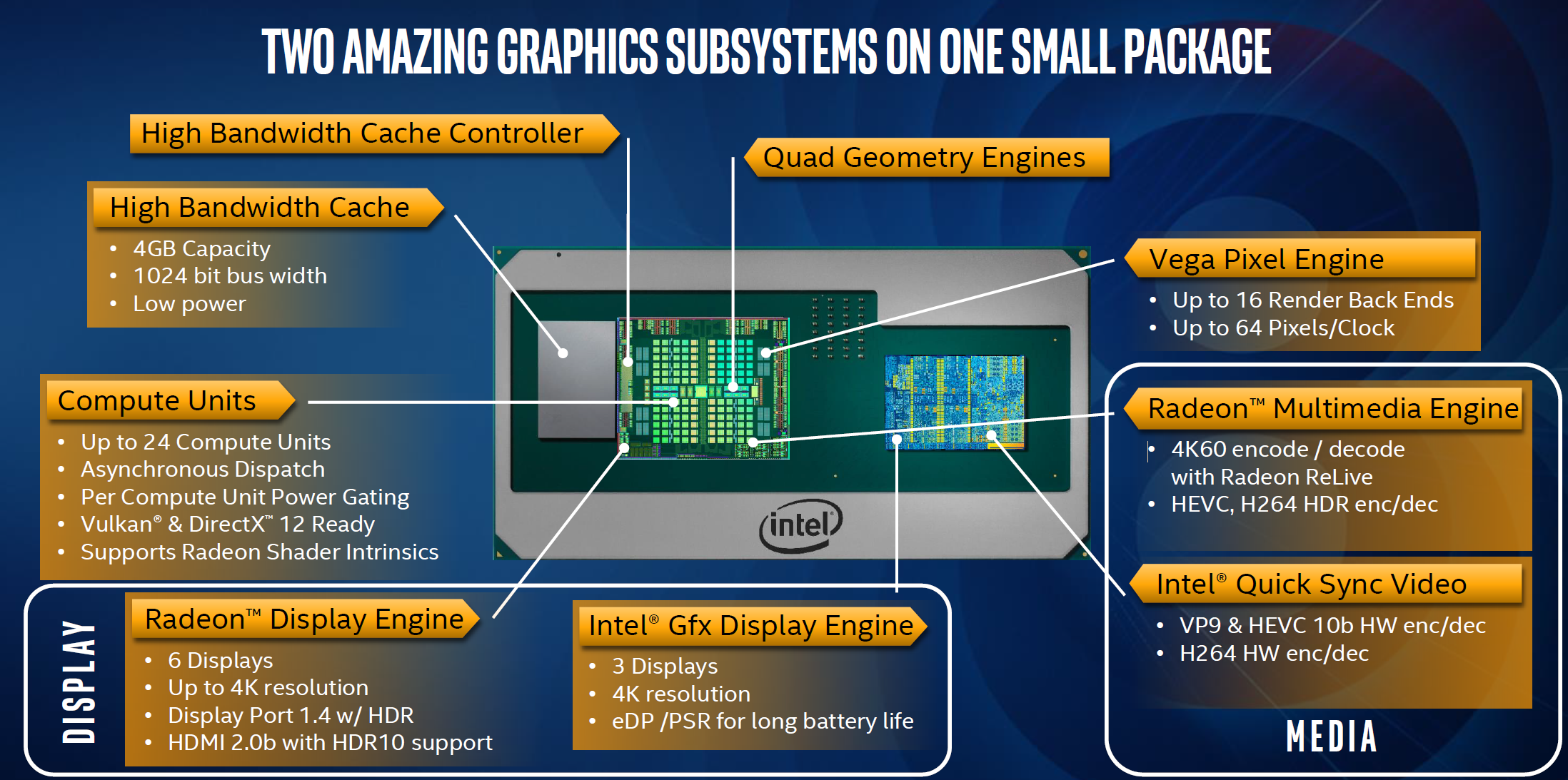
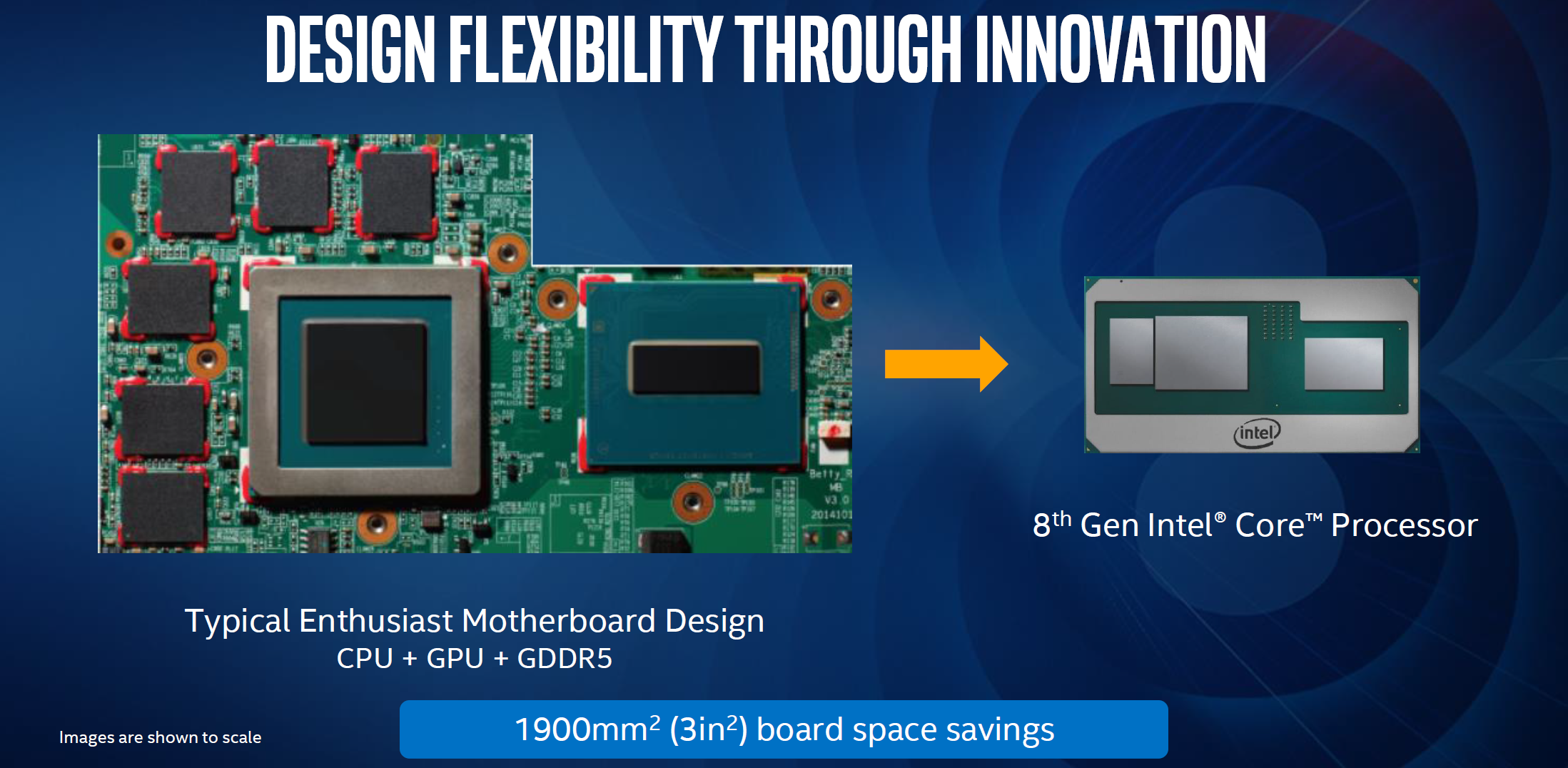
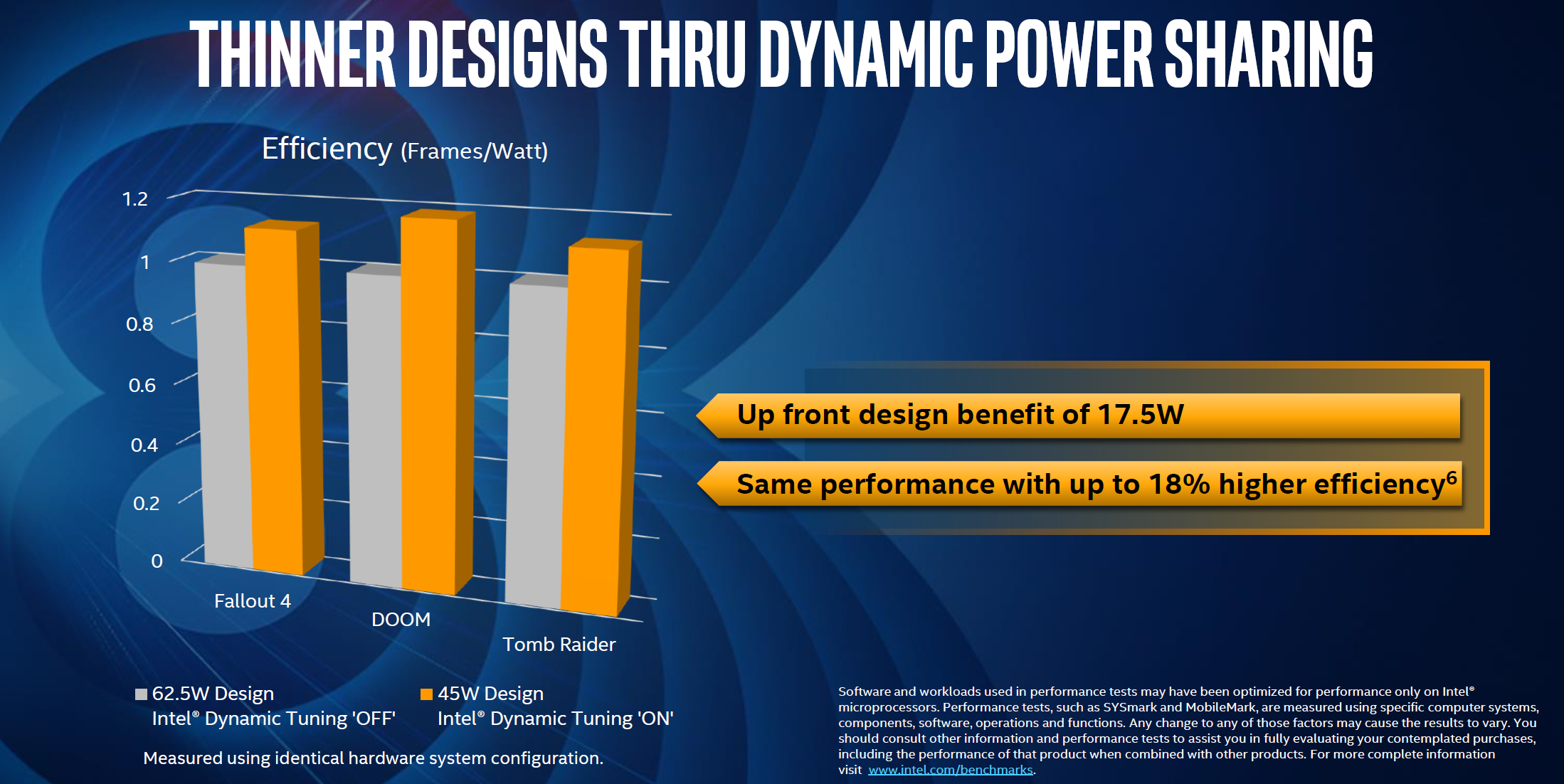
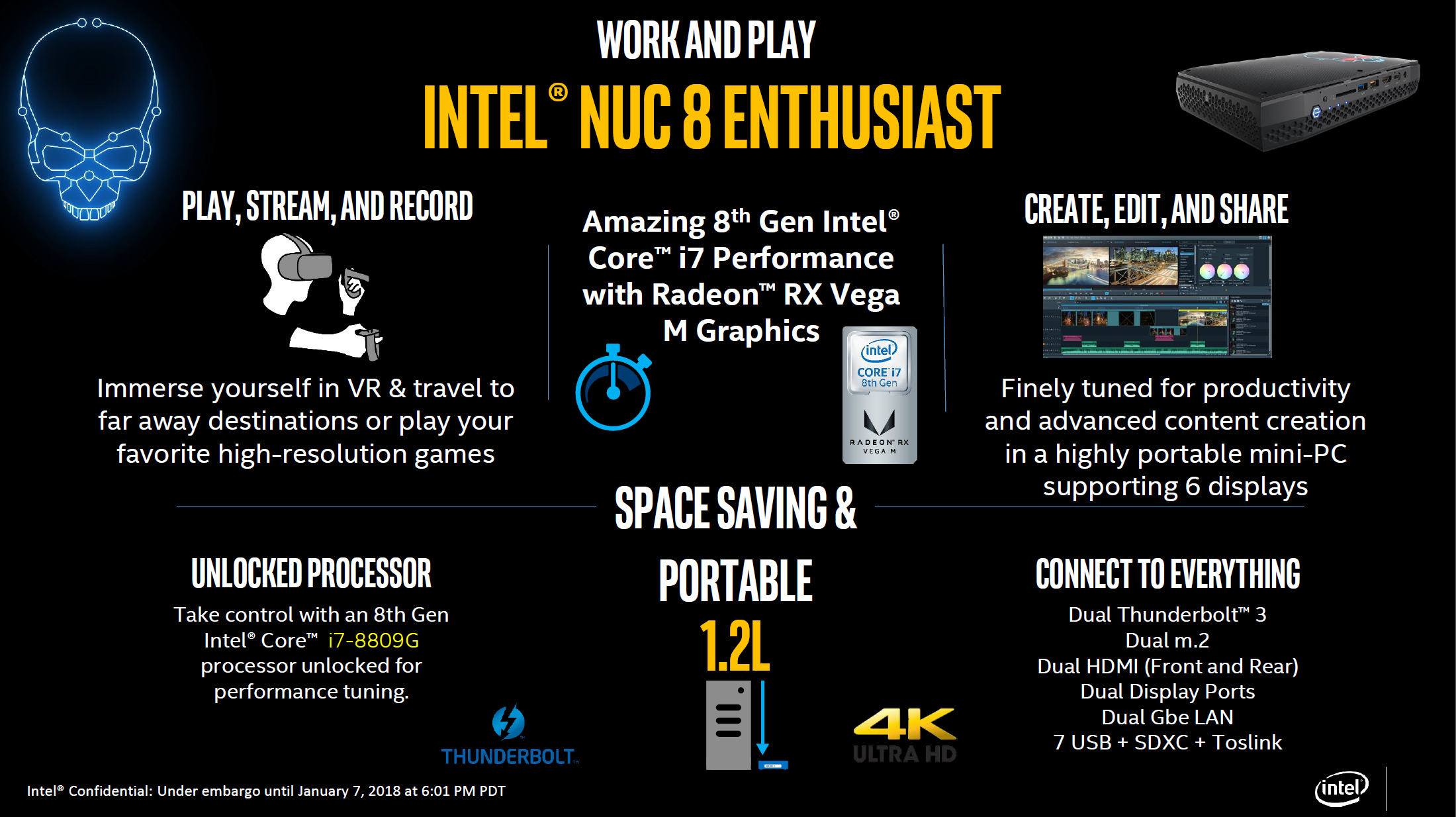
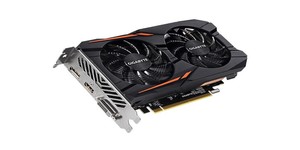
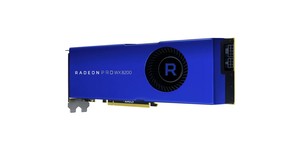
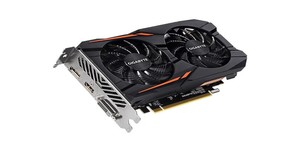




Want to comment? Please log in.